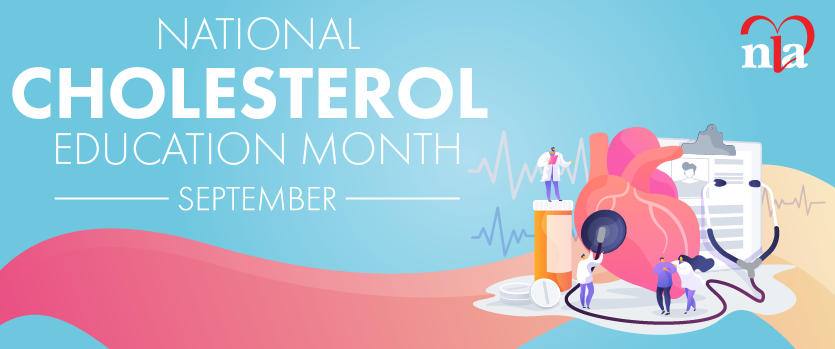There is an impressive portfolio of evidence-based dietary recommendations for cardiovascular disease (CVD) risk reduction, including those from the American Heart Association/American College of Cardiology (AHA/ACC)1 and the National Lipid Association (NLA),2 and for health promotion (2015–2020 Dietary Guidelines for Americans – DGAs).3 Despite evidence-based recommendations, there are ongoing controversies about diet and disease that pervade both the popular media and scientific literature. This reflects some combination of a lack of understanding, bias, political agendas, and different interpretations of the evidence. At the core of this confusion is the question of what foods and nutrients are cardioprotective and which ones increase CVD risk. This article will discuss some of the more controversial and confusing dietary recommendations and research that relate to the treatment of lipid metabolism disorders. As NLA members are well aware, it is important that these controversies be quelled for optimal management of patients with dyslipidemia.
The benefits of good nutritional practices across all stages of life are indisputable. They are especially important for about half of all American adults — 117 million people who have at least one preventable, chronic disease related to poor dietary patterns and physical inactivity.
The 2015–2020 DGAs (Table 1) issued recommendations, including healthy eating patterns and regular physical activity, to help people achieve and maintain good health and reduce the risk of chronic disease at any age.
Justification for and Controversy about the Nutrients to Limit
Added Sugars and CVD Risk
Sugars are either added during food processing or are packaged as such. They include monosaccharides disaccharides, syrups, naturally occurring sugars isolated from a whole food and concentrated so sugar is the primary component (e.g., fruit juice concentrates), and other caloric sweeteners.
A majority of intervention and observational studies reviewed by the Dietary Guidelines Advisory Committee (DGAC), the committee that provided recommendations for the DGAs (Scientific Report 2015)4 reported evidence among adults of an association between the higher intake of added sugars — especially in the form of sugar-sweetened beverages — and an increased risk of CVD — including hypertension, stroke, and CHD mortality — or increased CVD risk factors, including triglycerides and high blood pressure.5
The 2015–2020 DGAs recommend that people get less than 10 percent of their calories from added sugars. The World Health Organization (WHO)6 issued a similar recommendation that both adults and children consume less than 10 percent of calories from added sugars. It is clear that consuming the added sugars found in nutrient-poor foods and beverages (i.e., sugar-sweetened beverages) is not advised. Research is needed, however, to evaluate the effects of added sugar intake on CVD risk factors, including body weight changes with varying nutrient profiles and food matrices for added sugars.7 One question that remains to be answered is whether added sugars promote consumption of nutrient-dense foods that otherwise would not be consumed (e.g., flavored non-fat or low-fat milk and yogurt for children to increase calcium consumption), and, if so, is this better than not consuming the healthy foods without sugar?
Saturated Fat and Risk of CVD
There is strong evidence that the intake of saturated fatty acids is positively associated with intermediate and end-point health outcomes for: 1) increased total cholesterol, increased low-density lipoprotein cholesterol (LDL-C), and increased risk of CVD; and 2) increased markers of insulin resistance (IR) and increased risk of type 2 diabetes. The DGA, AHA/ACC, NLA, and Cochrane Review8 all recommend decreasing saturated fat to decrease both LDL-C and the risk of CVD. Controversy has arisen from some epidemiologic studies that concluded that saturated fat and dietary carbohydrates have similar associations for CVD risk.9-11 These studies have led to the conclusion that saturated fat does not increase CVD risk. In contrast, based on a large evidence base, when saturated fat is replaced with unsaturated fat (especially polyunsaturated fat), the risk of CVD decreases.9,12 One recent analysis of both the Nurses’ Health Study and Health Professionals Follow-up Study13 reported that substituting unsaturated fats — both polyunsaturated and onounsaturated fats from plant sources — as well as high- quality carbohydrates (from whole grains) for saturated fat lowered CHD risk.
Thus, current epidemiologic evidence shows the benefits of replacing saturated fat with unsaturated fat and carbohydrates from whole grains. Moreover, there is strong evidence that saturated fat should be reduced to lower LDL-C and non-high-density lipoprotein cholesterol (non-HDL-C), both of which are atherogenic lipoprotein particles. The AHA/ACC recommends that a person get from 5 to 6 percent of calories from saturated fat and the NLA recommends that less than 7 percent of calories come from saturated fat.
Dietary Cholesterol and Risk of CVD
The DGAs and the Institute of Medicine14 recommend that people should eat as little dietary cholesterol as possible while following a healthy eating pattern. There is evidence (rated Grade B, moderate level of evidence) to support the NLA’s recommendation to limit dietary cholesterol to less than 200mg a day to lower LDL-C and non-HDL-C.
The AHA/ACC Lifestyle Guideline did not recommend limiting dietary cholesterol. The DGAs conclude this does not mean that dietary cholesterol is not important for building a healthy eating pattern.
A recent systematic review and meta-analysis of studies on dietary cholesterol and CVD concluded that the effects of dietary cholesterol on incident coronary artery disease (CAD) and serum cholesterol outcomes remain unclear.15
However, the review states intervention trials have shown a significant increase in TC, LDL- C, and HDL-C when comparing doses of dietary cholesterol (500–900 mg/d). In an American Journal of Clinical Nutrition editorial titled “Eggs and beyond: Is dietary cholesterol no longer important?” Robert Eckel, MD,16 writes that an “increase in HDL-cholesterol with increases in dietary cholesterol is very similar to the effect of saturated fat on HDL-cholesterol and should not be inferred as neutralizing. In general, we live in an age wherein increases in HDL-cholesterol should be interpreted cautiously in comparison to changes in LDL-cholesterol.
In summary, the lack of a dietary cholesterol recommendation in the recently released guidelines is controversial. This should not be interrupted as an affirmation to ignore dietary cholesterol because there is clear evidence that it does increase LDL-C and non-HDL-C, especially in hyper-responders, who represent about 30 percent of the U.S. population.
Sodium and Cardiovascular Disease Risk There is consistent agreement that adults who would benefit from lowering their blood pressure should decrease sodium intake. DGAC 2015 concurred with AHA/ ACC that adults who would benefit from lowering their blood pressure should “lower sodium intake.”
The 2015 DGAC also agreed there is strong evidence that adults who would benefit from lowering their blood pressure should “consume no more than 2,400 mg of sodium/day.” The question is whether lowering sodium intake also decreases CVD events. In summary, the evidence that sodium increases blood pressure is strong. One question that remains to be addressed is: If sodium is reduced to less than 2,300 mg/day or less than 1,500 mg/day, is there an adverse outcome?
Conclusions
As long as dietary guidelines are issued, there likely will be controversy over some of the recommendations or lack thereof.
It behooves the scientific community to support current guidelines based on robust evidence and to implement them in practice to reduce patients’ risk of CVD. Failure to do this, especially because of the criticisms of a “vocal few,” is a disservice to science, evidence analysis and patient care.
Disclosure statement: Dr. Karmally has received stock options from Solarzyme and consulting fees from Sesame Workshop. Dr. Kris-Etherton has received research grants from DuPont and the California Walnut Commission. She received honoraria from Unilever and McDonald’s Global Advisory Council. She is on the advisory board for DuPont, Unilever, Hass Avocado Board, California Walnut Commission, and the McDonald’s Global Advisory Council.
References are listed on page 36 of the PDF.






.jpg)
.png)












